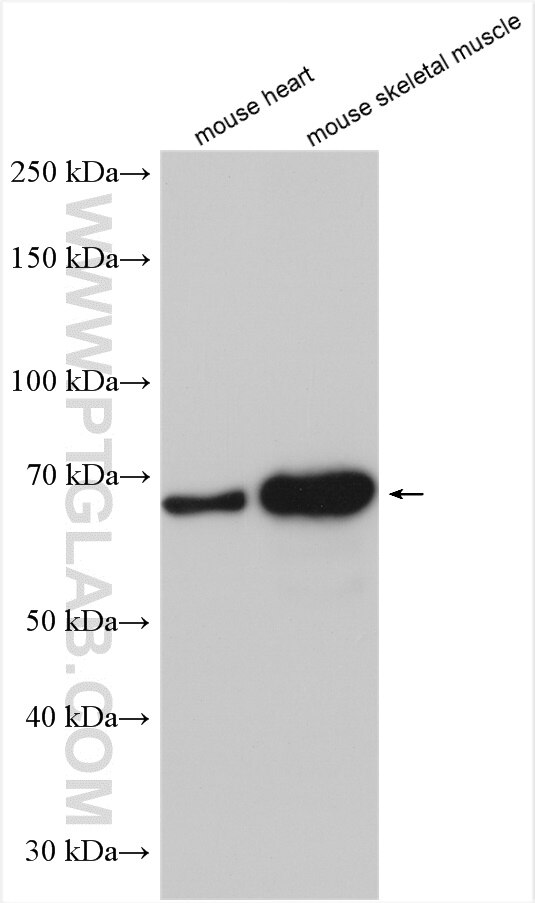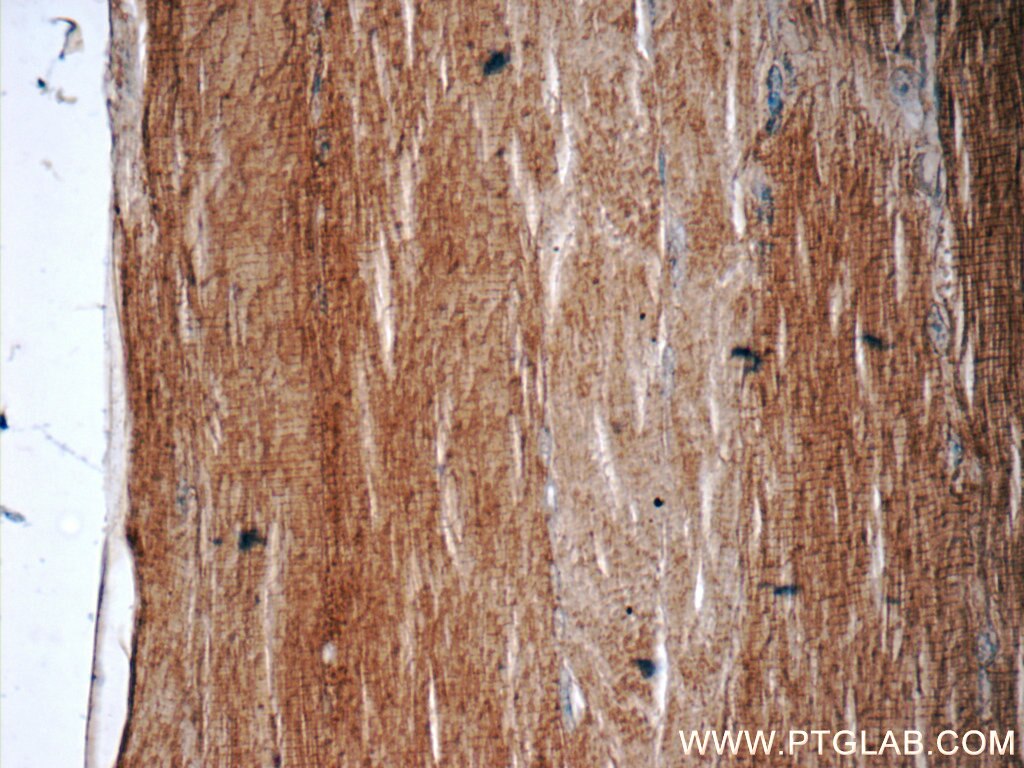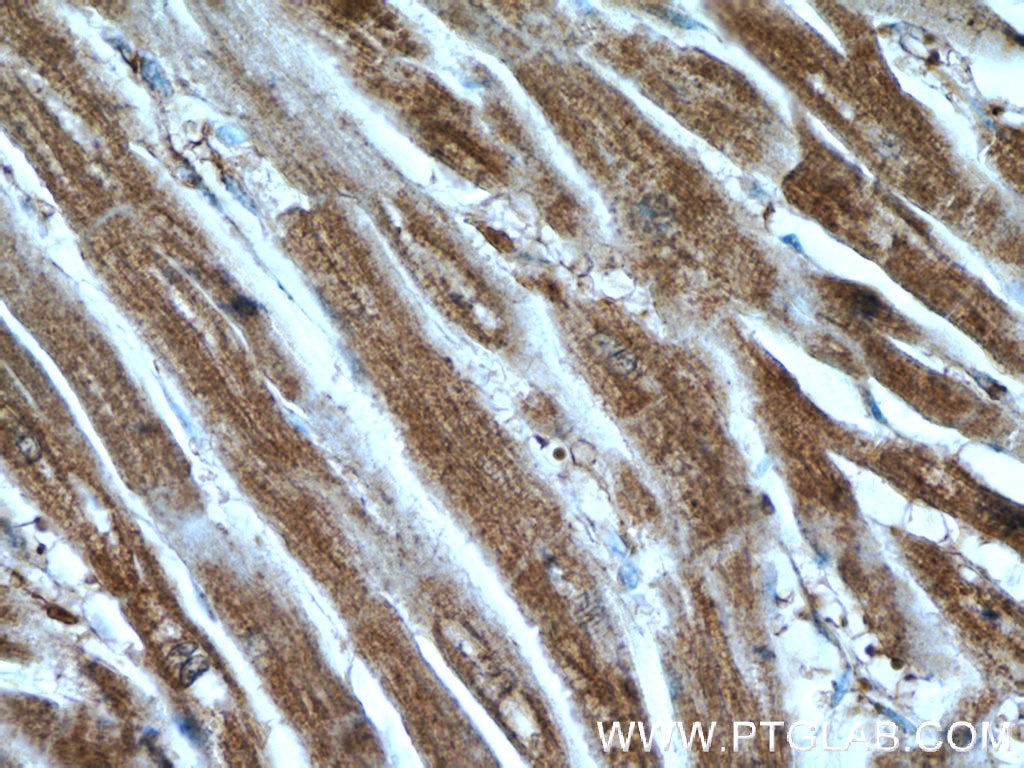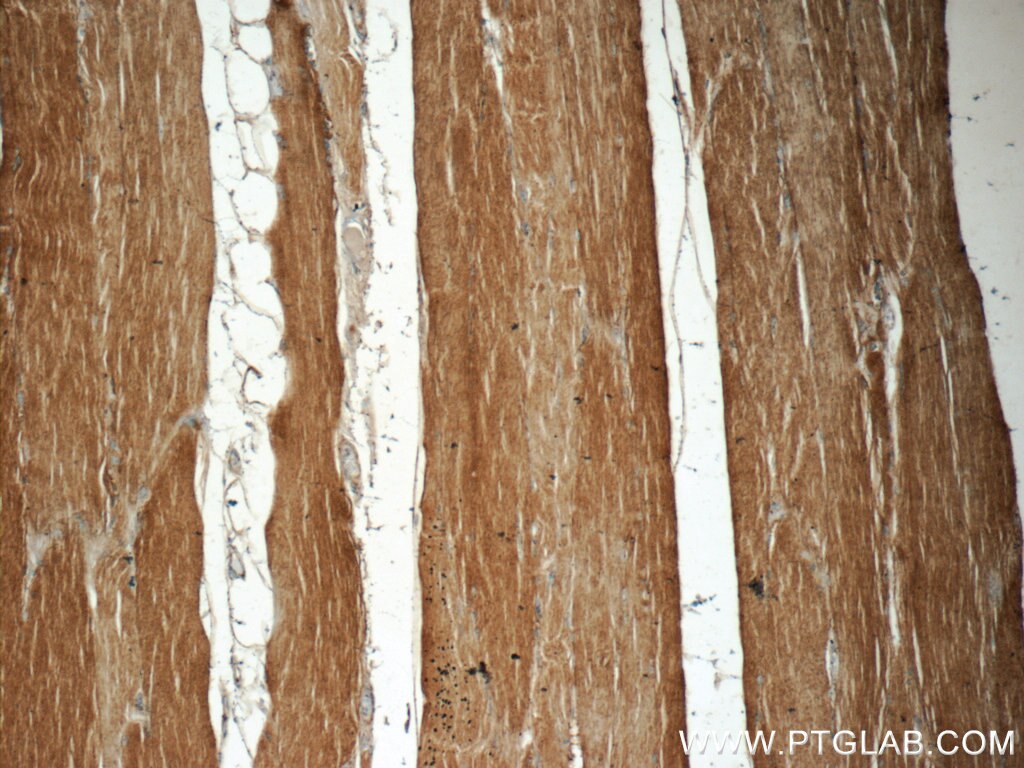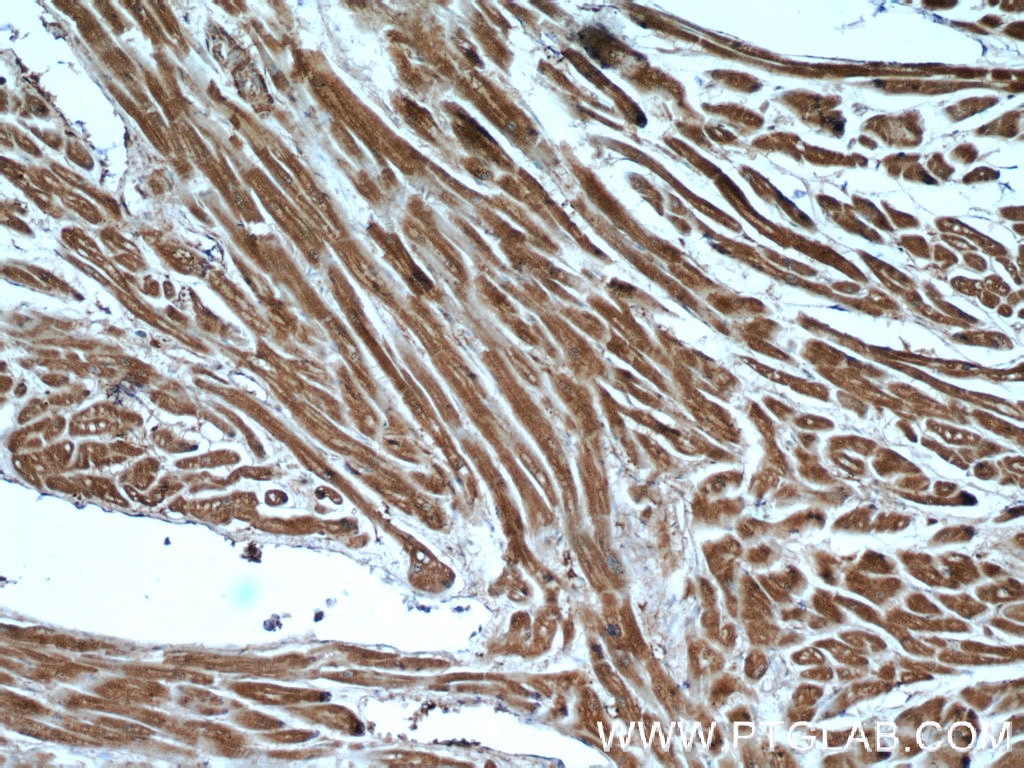KBTBD10 Polyclonal antibody
KBTBD10 Polyclonal Antibody for IHC, WB, ELISA
Host / Isotype
Rabbit / IgG
Reactivity
human, mouse
Applications
WB, IHC, ELISA
Conjugate
Unconjugated
Cat no : 25577-1-AP
Synonyms
Validation Data Gallery
Tested Applications
| Positive WB detected in | mouse heart tissue, mouse skeletal muscle tissue |
| Positive IHC detected in | human heart tissue, human skeletal muscle tissue Note: suggested antigen retrieval with TE buffer pH 9.0; (*) Alternatively, antigen retrieval may be performed with citrate buffer pH 6.0 |
Recommended dilution
| Application | Dilution |
|---|---|
| Western Blot (WB) | WB : 1:1000-1:6000 |
| Immunohistochemistry (IHC) | IHC : 1:20-1:200 |
| It is recommended that this reagent should be titrated in each testing system to obtain optimal results. | |
| Sample-dependent, Check data in validation data gallery. | |
Product Information
25577-1-AP targets KBTBD10 in WB, IHC, ELISA applications and shows reactivity with human, mouse samples.
| Tested Reactivity | human, mouse |
| Host / Isotype | Rabbit / IgG |
| Class | Polyclonal |
| Type | Antibody |
| Immunogen | KBTBD10 fusion protein Ag22311 |
| Full Name | kelch repeat and BTB (POZ) domain containing 10 |
| Calculated Molecular Weight | 606 aa, 68 kDa |
| Observed Molecular Weight | 68 kDa |
| GenBank Accession Number | BC006534 |
| Gene Symbol | KBTBD10 |
| Gene ID (NCBI) | 10324 |
| RRID | AB_2880137 |
| Conjugate | Unconjugated |
| Form | Liquid |
| Purification Method | Antigen affinity purification |
| Storage Buffer | PBS with 0.02% sodium azide and 50% glycerol pH 7.3. |
| Storage Conditions | Store at -20°C. Stable for one year after shipment. Aliquoting is unnecessary for -20oC storage. 20ul sizes contain 0.1% BSA. |
Background Information
KBTBD10, also named as KBTBD10 or KRP1, is a 606 amino acid protein, which contains one BACK (BTB/Kelch associated) domain, one BTB (POZ) domain and five Kelch repeats. KBTBD10 localizes in the cytoplasm and is expressed in Sarcomeric muscle. KBTBD10 is involved in skeletal muscle development and differentiation. KBTBD10 regulates proliferation and differentiation of myoblasts and plays a role in myofibril assembly by promoting lateral fusion of adjacent thin fibrils into mature, wide myofibrils.
Protocols
| Product Specific Protocols | |
|---|---|
| WB protocol for KBTBD10 antibody 25577-1-AP | Download protocol |
| IHC protocol for KBTBD10 antibody 25577-1-AP | Download protocol |
| Standard Protocols | |
|---|---|
| Click here to view our Standard Protocols |
